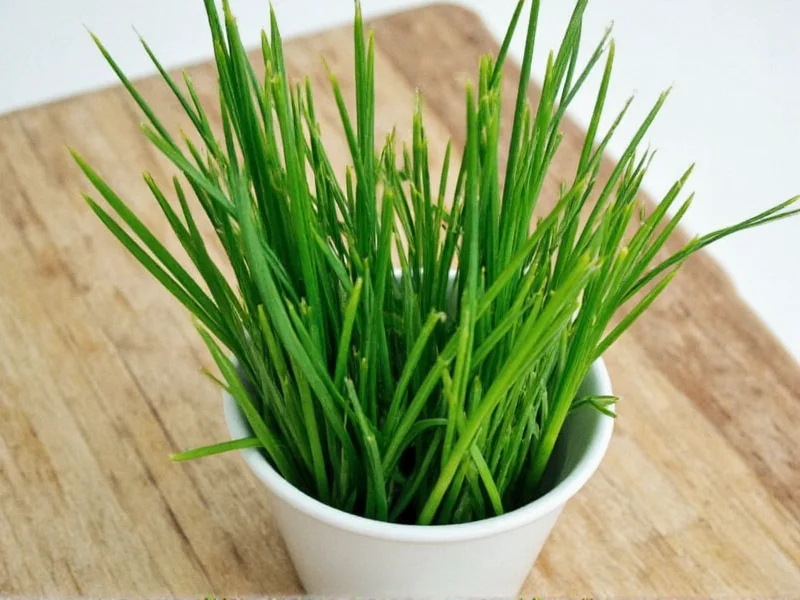Drying fresh chives preserves their delicate onion flavor for months, allowing you to enjoy garden-fresh taste year-round. This guide covers three reliable methods to dry chives while maintaining maximum flavor and color. Whether you're harvesting from your garden or have extra from the market, proper drying techniques ensure you never waste this versatile herb.
Preparing Chives for Drying
Before drying chives, proper preparation ensures optimal results. Start by selecting vibrant green, firm chives without yellowing or wilting. Gently rinse them under cool running water to remove dirt and insects, being careful not to bruise the delicate stems. Pat completely dry with clean kitchen towels or use a salad spinner. For best flavor retention, avoid cutting chives until after drying unless using the oven method.
Three Effective Drying Methods
Each drying technique offers different advantages depending on your time constraints and equipment availability. Understanding how to dry fresh chives properly prevents mold growth and flavor loss.
| Drying Method | Time Required | Temperature | Effort Level |
|---|---|---|---|
| Air Drying | 1-2 weeks | Room temperature | Low |
| Oven Drying | 2-3 hours | 170°F (75°C) | Medium |
| Dehydrator | 4-6 hours | 95°F (35°C) | Low |
Air Drying Fresh Chives
Air drying represents the simplest method to dry fresh chives at home without special equipment. Bundle 5-6 chive stalks together with twine, ensuring the cut ends align. Hang bundles upside down in a dark, warm area with good air circulation—like a pantry or closet. Darkness preserves chlorophyll and flavor compounds. Check daily; chives are ready when leaves crumble easily. This best way to dry chives for long term storage requires patience but yields excellent flavor retention.
Oven Drying Technique
When learning how to dry fresh chives quickly, the oven method delivers reliable results. Preheat to the lowest setting (typically 170°F/75°C). Chop chives into 1-inch pieces and spread them in a single layer on a parchment-lined baking sheet. Prop the oven door open slightly with a wooden spoon to allow moisture escape. Check every 30 minutes, stirring occasionally, until completely dry and brittle (2-3 hours). Oven drying chives requires attention to prevent scorching the delicate herbs.
Dehydrator Method
For those asking can you dry chives in a dehydrator, the answer is yes—and it's highly effective. Arrange chopped chives in a single layer on dehydrator trays. Set temperature to 95°F (35°C) and dry for 4-6 hours. The consistent low heat preserves maximum flavor compounds. Check periodically by crushing a piece between fingers; if it shatters, drying is complete. This method provides the most uniform results when drying chives in a dehydrator.
Proper Storage of Dried Chives
Understanding how to store dried chives properly prevents moisture absorption and flavor degradation. Once completely cooled, crumble dried chives into an airtight glass container. Dark jars protect against light exposure that degrades flavor. Store in a cool, dark pantry away from heat sources. Properly stored dried chives maintain peak flavor for 6-12 months. For extended shelf life, consider vacuum sealing portions for freezer storage up to 18 months.
Using Dried Chives in Cooking
Fresh chives vs dried chives flavor difference requires recipe adjustments. Dried chives have approximately three times the concentrated flavor of fresh. Substitute 1 teaspoon dried chives for every 1 tablespoon fresh chives in recipes. Rehydrate in warm water for 10 minutes before using in cold dishes like salads. Add during the last 5-10 minutes of cooking to preserve volatile flavor compounds. Dried chives work particularly well in soups, stews, egg dishes, and compound butters.
Troubleshooting Common Drying Issues
Mold development indicates insufficient drying—return chives to the drying process immediately. Browning suggests excessive heat; lower temperature in future batches. If wondering how long do dried chives last, check for faded color or diminished aroma, which signal flavor loss. For optimal results when drying chives in oven, ensure consistent air circulation by leaving the door slightly ajar. Never skip the crucial step of verifying complete dryness before storage.
Frequently Asked Questions
Can you dry chives without losing flavor?
Yes, drying chives at low temperatures (below 100°F/38°C) preserves maximum flavor. The dehydrator method at 95°F (35°C) maintains the highest flavor compounds compared to oven or air drying. Harvest chives in the morning after dew evaporates for peak essential oil concentration.
How do you know when dried chives are properly dry?
Properly dried chives should feel completely brittle and crumble easily between your fingers. When bent, they should snap rather than bend. Any flexibility indicates residual moisture that could lead to mold during storage. Test one piece after cooling to room temperature for accurate assessment.
Should you wash chives before drying?
Yes, always wash fresh chives before drying to remove soil and insects. Use cool water and handle gently to avoid bruising. Pat completely dry with clean towels or use a salad spinner followed by air drying on paper towels. Moisture remaining before the drying process begins can cause mold development.
Can you dry chives in the microwave?
While possible, microwave drying often produces inconsistent results and can easily burn delicate chives. If attempting, use 10-15 second intervals on low power, checking frequently. The rapid moisture removal typically degrades flavor compounds more than slower methods. Oven or dehydrator methods yield superior flavor retention for drying chives properly.
Do dried chives turn brown during the drying process?
Some color change is normal, but significant browning indicates excessive heat. Chives contain heat-sensitive chlorophyll that degrades above 100°F (38°C). To maintain vibrant green color, use the lowest possible drying temperature and ensure darkness during air drying. Properly dried chives should retain a medium green hue, not turn brown or yellow.











 浙公网安备
33010002000092号
浙公网安备
33010002000092号 浙B2-20120091-4
浙B2-20120091-4